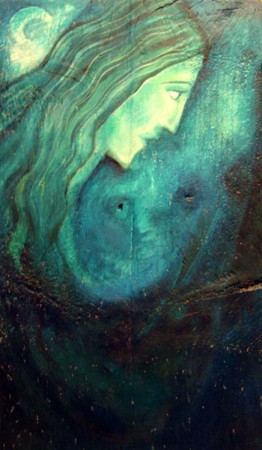
Hear my silent prayer
“Heed my quiet call
When the dark and blue surround you
Step into my sigh
Look inside the light
You will know that I have found you”
Dreamcatcher lyrics by Secret Garden.

Hear my silent prayer
“Heed my quiet call
When the dark and blue surround you
Step into my sigh
Look inside the light
You will know that I have found you”
Dreamcatcher lyrics by Secret Garden.
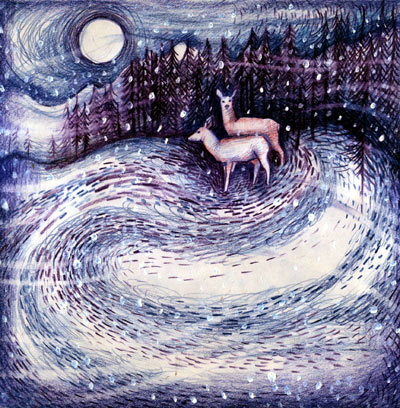
I really wanted to get a post out before Christmas and I’ve just managed to finish a drawing today, Christmas Day, pausing now and then to prepare the nutroast.
I would love to wish all my visitors and followers a very Happy Christmas!
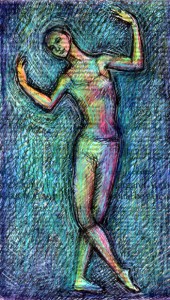
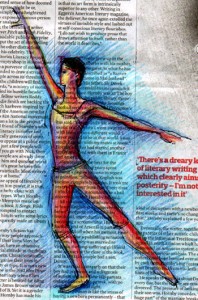
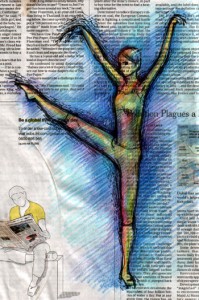
I believe, sometimes, that the ultimate is to dance.
I didn’t realise I liked ballet so much until I stumbled upon a youtube video of Polina Semionova dancing when I was looking randomly for dance videos. It entranced me so much I had to keep playing it over and over again. I’ve been a fan of Sylvie Guillem and seen Carlos Acosta, but I’m not normally a fan of traditional ballet – it seems so unnatural to be up on pointe. I’ve changed my mind now, I’m a fan, so I’m posting this youtube video and have used it to make some sketches that I did on old newspaper. I like the texture created by the newsprint and the way that it looks transitory and transparent. But I know I haven’t done Polina justice!
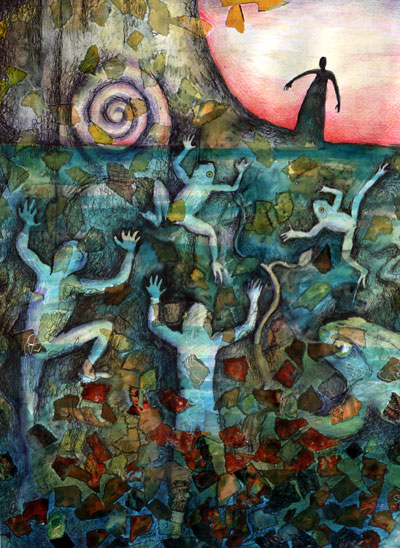
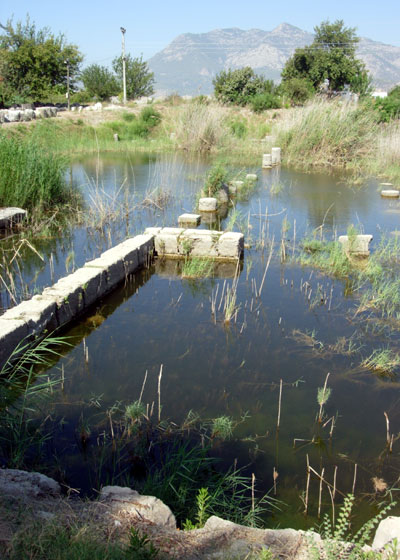
I’ve been illustrating more myths, inspired this time by ruins I visited when on holiday back in September.
The ruins of Letoon are near Patara in the Lycian region of Turkey. I’ve been meaning to write about the ruins for sometime as I really like the mythology associated with them. This is the story:
Letoon was the holy sanctuary of the goddess Leto and her two children, Apollo and Artemis. In Greek mythology, Leto was the lover of Zeus, who abandoned her and left her to wander, pregnant, in search of a secure home. She was thirsty and came to a Spring at nearby Xanthus but as she tried to take a drink some shepherds chased her away. In revenge, the goddess turned them into frogs.
The ruins chime with the story. They are partially submerged with pools that teem with frogs, dragonflies, terrapins and pond weed. When I wandered close to the edge the water became alive with movement. There is something romantic about the place with its temples, inscriptions, water and wildlife. And the frogs are a reminder of Leto’s myth.
I’m still intrigued by the ‘underwater world’. My illustration is somewhat dark and I hesitated over whether to post it, but thought I’d just go ahead anyway. It features Leto, frogs and ‘frogmen’. My ‘shepherds-turned-into-frogs’ are somewhat comic, I couldn’t help thinking of them in terms of cartoon alien creatures in jumper suits! But, apart from that, the imagery I have done reminds me of the ballet, ‘Garden of Earthly Delights’ that I saw years ago performed by Rambert Dance Company.
I looked into the mythology and symbolism of frogs. In many religions around the world they are important symbols of transformation and fertility. In Egypt they were associated with the goddess of fertility and childbirth. This may have been because of the appearance of many frogs with the flooding of the Nile, considered omens of fruitfulness. In some cultures they symbolise cleansing and healing because of their association with rain and water.
It is interesting to read about frogs as Totem animals by the artist Ravenari. Check out her lovely artwork too.
To me, frogs are symbols of the link between the conscious and unconsious because of their life both in and out of water and their need for water. I shall explore more amphibious creature myths another time. But here is a link to a poem, “Ode to Drowning” by Tishani Doshi that I think is very beautiful.
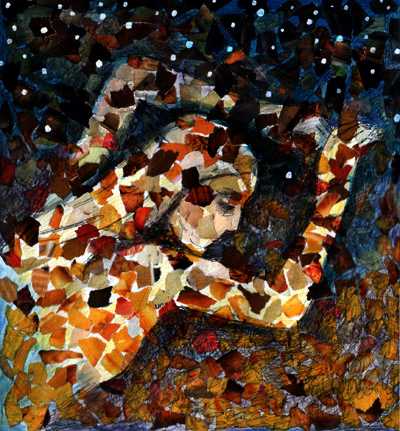
Here’s a beautiful poem I was inspired to illustrate with mixed media:
Sleeping in the Forest
I thought the earth remembered me,
she took me back so tenderly,
arranging her dark skirts, her pockets
full of lichens and seeds.
I slept as never before, a stone on the river bed,
nothing between me and the white fire of the stars
but my thoughts, and they floated light as moths
among the branches of the perfect trees.
All night I heard the small kingdoms
breathing around me, the insects,
and the birds who do their work in the darkness.
All night I rose and fell, as if in water,
grappling with a luminous doom. By morning
I had vanished at least a dozen times
into something better.from Sleeping In The Forest by Mary Oliver
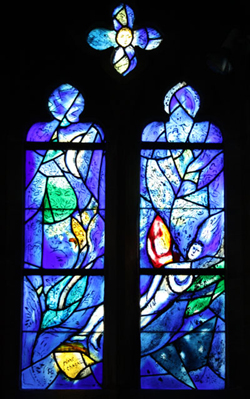
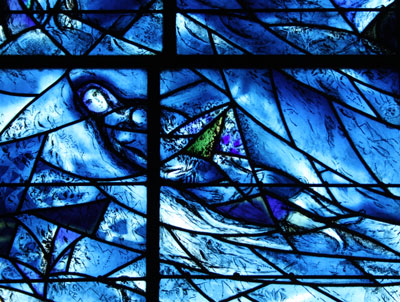
At last I have managed to visit Chagall’s beautiful stained glass windows at All Saints church, Tudeley near Tonbridge in Kent. They have been a source of inspiration to me for past projects and I can see that they will be in future as well.
We drove through many old villages, houses with crooked chimneys and blackened beams, and through woods bright with autumn yellow. Yellow is definitely a colour I’m noticing right now in nature, paintings and other things but it was the blues of the windows that I was keen to see. They didn’t disappoint.
All Saints, Tudeley is the only church in the world to have all its twelve windows decorated by the Russian artist Marc Chagall. According to Chagall the windows were inspired by Psalm 8; despite being jewish, Chagall found the Bible captivating. I wondered why such a small, simple church in an otherwise ordinary area was favoured with the work of so great an artist, so I looked up the story behind the creation of the windows.
The windows are a memorial tribute to Sarah D’Avigdor-Goldsmid, a 21 year old woman who died in a sailing accident in 1963 near the town of Rye in Sussex. She was the daughter of Sir Henry and Lady D’Avigdor-Goldsmid who lived nearby. Apparently Sarah had been enchanted by Chagall’s designs for the Hadassah windows, exhibited in Paris sometime before the accident. This led her parents to ask Chagall if he’d be willing to create the east window in her memory. Chagall was very happy to, and ended up creating all twelve windows.
In the magnificant east window Sarah lies adrift in the arms of the blue sea, a peaceful figure, while a few figures watch or mourn and Christ on the cross hangs over them all. I love the blue.
“The colours address our vital consciousness directly, because they tell of optimism, hope and delight in life” says Monsignor Klaus Mayer, who uses Chagall’s work in mediations and books.
“In our life there is a single color, as on an artist’s palette, which provides the meaning of life and art. It is the color of love.” Marc Chagall.
The story is very sad but has been made into something beautiful with glass and light. It has sown seeds of inspiration in me for the continuation of the ‘Turtle Dreaming‘ story that I began creating and illustrating earlier this year. 

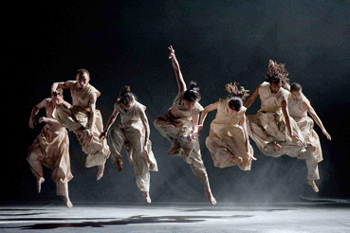
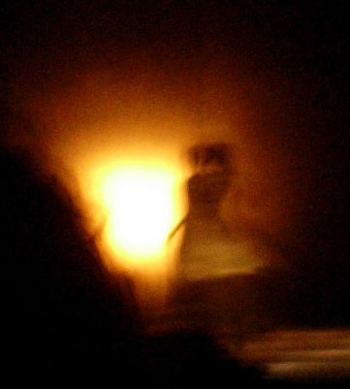
A few nights ago I went to see Vertical Road, the latest dance work by the choreographer Akram Khan. The Brighton Dome programme said “the work takes it’s inspiration from universal myths of angels that symbolise ‘ascension’ – the road between the earthly and the spiritual, the Vertical Road“. As I’m intrigued by angels, myths and mysteries I was keen to see it.
Akram Khan is a dancer trained in both classical Kathak dance and contemporary dance. He has successfully incorporated elements of kathak into his own contemporary style. As he says in interviews, his new work, Vertical Road, is spiritual, drawing inspiration and using dancers from many cultures.
The performance gripped me from the start. It began with the sound of water. Behind a giant screen at the back of the stage, a figure could just be seen, his hands tracing circles in the fabric as though attempting to find a way through. Frozen dancers became high on energy; they danced exhortation, torment, blind servitude, listlessness, frustration, grief. No obvious story, but what I saw was people in the grip of relentless mechanical lives, almost regimented in their pursuit of something higher than themselves. They went through times of despair or ecstacy, often overlooking their simple, united humanity.
They tilt their hands upwards
looking into bright sound – whirling and moving in their thunderous lives.
Worshipping amongst the dust of ages,
seeking solace amongst statues, the shattered wings and stone cold hope of angels.
United in regiment and yearning,
they struggle.
And then, the seed,
a particle of light and sound, a moat floats and stills, in sweet silence,
emerging from the dawn,
and hands, from beyond, reach out to touch
alien faces of a peopled creature.
So simple, so quiet.
The reaching out is touching.
The wait is over.
Found.
There was something universal about the performance. I found it quite moving.
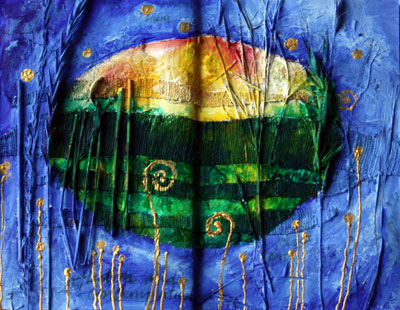
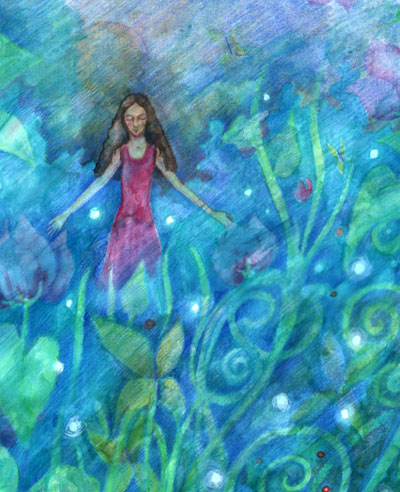 I’ve continued with the idea of a cave garden. It doesn’t make much sense having a garden in a cave where there’s no light, its as crazy as carpeting pavements. Still, I decided to create cave garden pages in my altered book and found some grass specimens in one of my collections; barren brome, wild oat grass and the ‘clapping hands’ of couch grass decorate the pages. I liked the idea of being in a garden inside a cave and looking out at a landscape and sunset. The page is really just a rough start but I thought I’d display it anyway.
I’ve continued with the idea of a cave garden. It doesn’t make much sense having a garden in a cave where there’s no light, its as crazy as carpeting pavements. Still, I decided to create cave garden pages in my altered book and found some grass specimens in one of my collections; barren brome, wild oat grass and the ‘clapping hands’ of couch grass decorate the pages. I liked the idea of being in a garden inside a cave and looking out at a landscape and sunset. The page is really just a rough start but I thought I’d display it anyway.
I haven’t got around to visiting a garden yet although I have in mind a place called ‘The Breathing Space’ where a friend has created a willow dome and made it a place for people to go to meditate and enjoy nature. You can see her blog here. Instead I stayed in and worked on a few illustrations on the garden theme. Here is one of them called ‘In the Night Garden’. I’m aware of the children’s television programme of that title, but I don’t care!
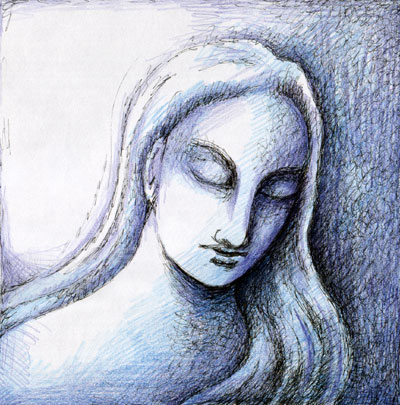
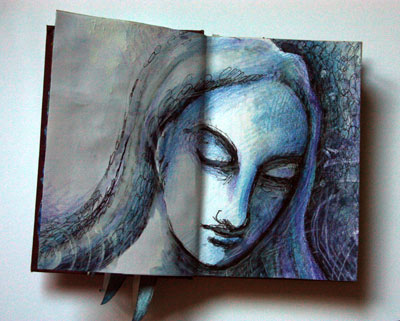
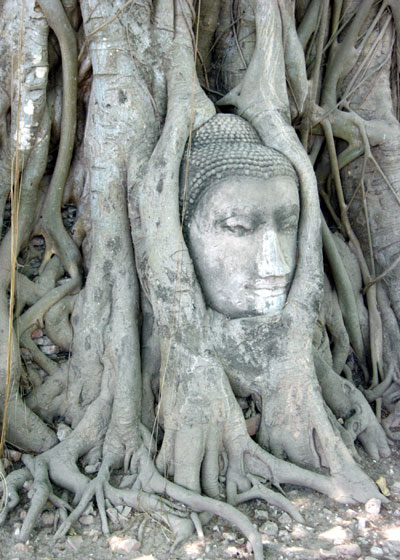
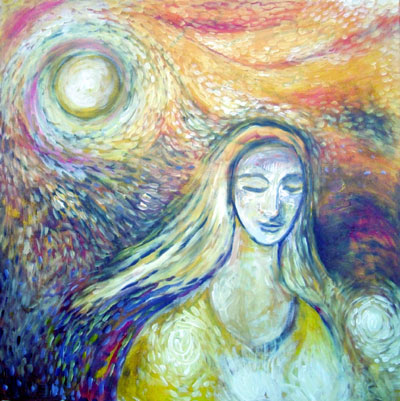
Days ago I imagined I was in a garden. Usually I like wild places but I definitely yearned for a garden of stillness and contemplation. I let the day dream unfold and take me to a cave, a cave garden, in which to meditate. Walking back with the shopping, my thoughts were adrift in powder blue, and I was surrounded by cave drawings of sea creatures, birds and flowers. Peaceful, it reminded me of a painting of Radha and Krishna in the Grove as can be seen here.
I need to find a garden.
The opalite light breaks into brightness. It has been glorious for days, but somehow too bright, too blazing. Its starkness has made me want to turn away and hide. I’ve felt inspired to draw and made this sketch that I’ve called “Woman Shunning the Light”.
I have now added the picture to my ‘altered book’.
She has the face that so often crops up in my pictures. It isn’t my face but the face of an unknown, mystrey woman that looks similar to the Buddha’s head in this photo taken in Ayutthaya in Thailand. She has appeared in my “Woman with Candle” painting, taking light from a dying sun to carry with her into the night. (I have altered the colours of the painting in photoshop to make it bluer – you can see the original on my website paintings page here.) It has an Edvard Munch/Van Gogh inspired sky.
I stumbled upon a passage by Bill Plotkin from his book ‘Soulcraft’ which makes me think about the light and the dark:
People who live excessively upperworld lives take a transcendental view of everything. They tend to see light, love, unity and peace everywhere. They are attracted to the Course in Miracles or aspire to, “enlightenment,” via an ungrounded approach to Buddhism….
…People who live excessively underworld lives see the world darkly. They tend to see hidden meaning, mystery, and the undoing of things everywhere. They gravitate toward the occult and the paradoxical. They want to penetrate to the center of everything and understand it all by standing under….
A holistic approach to spirituality interweaves the ascent and the descent, rendering balance to the experience of both the upperworld and the underworld.
You can read more of the passage here.